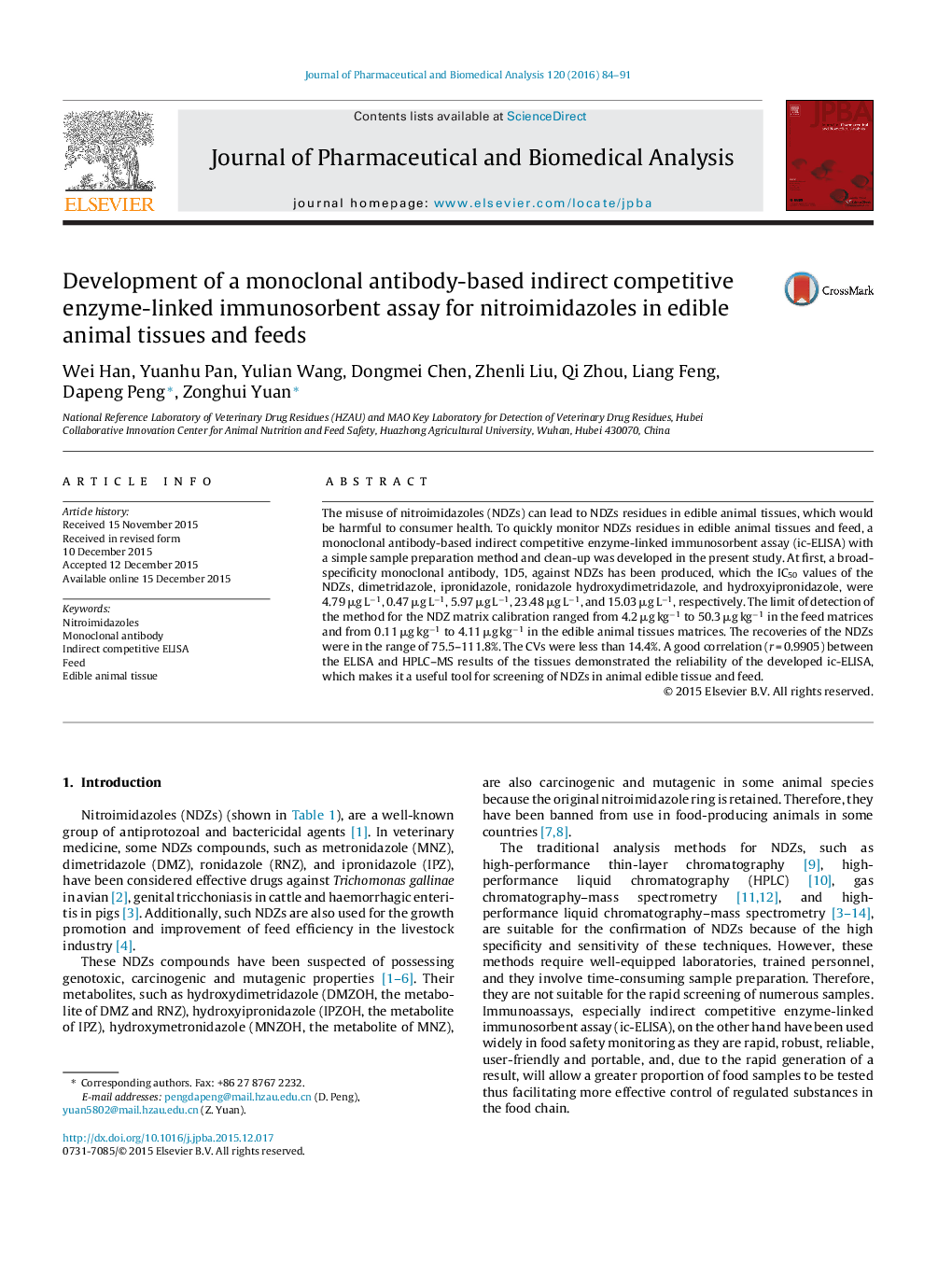| Article ID | Journal | Published Year | Pages | File Type |
|---|---|---|---|---|
| 1220586 | Journal of Pharmaceutical and Biomedical Analysis | 2016 | 8 Pages |
•The obtained sensitive antibody exhibited the capability to recognize 5 NZDs.•The developed ic-ELISA can simultaneous determination of NZDs in food and feed.•The ic-ELISA can serve as an effective screening tool in any routine laboratory.
The misuse of nitroimidazoles (NDZs) can lead to NDZs residues in edible animal tissues, which would be harmful to consumer health. To quickly monitor NDZs residues in edible animal tissues and feed, a monoclonal antibody-based indirect competitive enzyme-linked immunosorbent assay (ic-ELISA) with a simple sample preparation method and clean-up was developed in the present study. At first, a broad-specificity monoclonal antibody, 1D5, against NDZs has been produced, which the IC50 values of the NDZs, dimetridazole, ipronidazole, ronidazole hydroxydimetridazole, and hydroxyipronidazole, were 4.79 μg L−1, 0.47 μg L−1, 5.97 μg L−1, 23.48 μg L−1, and 15.03 μg L−1, respectively. The limit of detection of the method for the NDZ matrix calibration ranged from 4.2 μg kg−1 to 50.3 μg kg−1 in the feed matrices and from 0.11 μg kg−1 to 4.11 μg kg−1 in the edible animal tissues matrices. The recoveries of the NDZs were in the range of 75.5–111.8%. The CVs were less than 14.4%. A good correlation (r = 0.9905) between the ELISA and HPLC–MS results of the tissues demonstrated the reliability of the developed ic-ELISA, which makes it a useful tool for screening of NDZs in animal edible tissue and feed.
Graphical abstractFigure optionsDownload full-size imageDownload as PowerPoint slide
